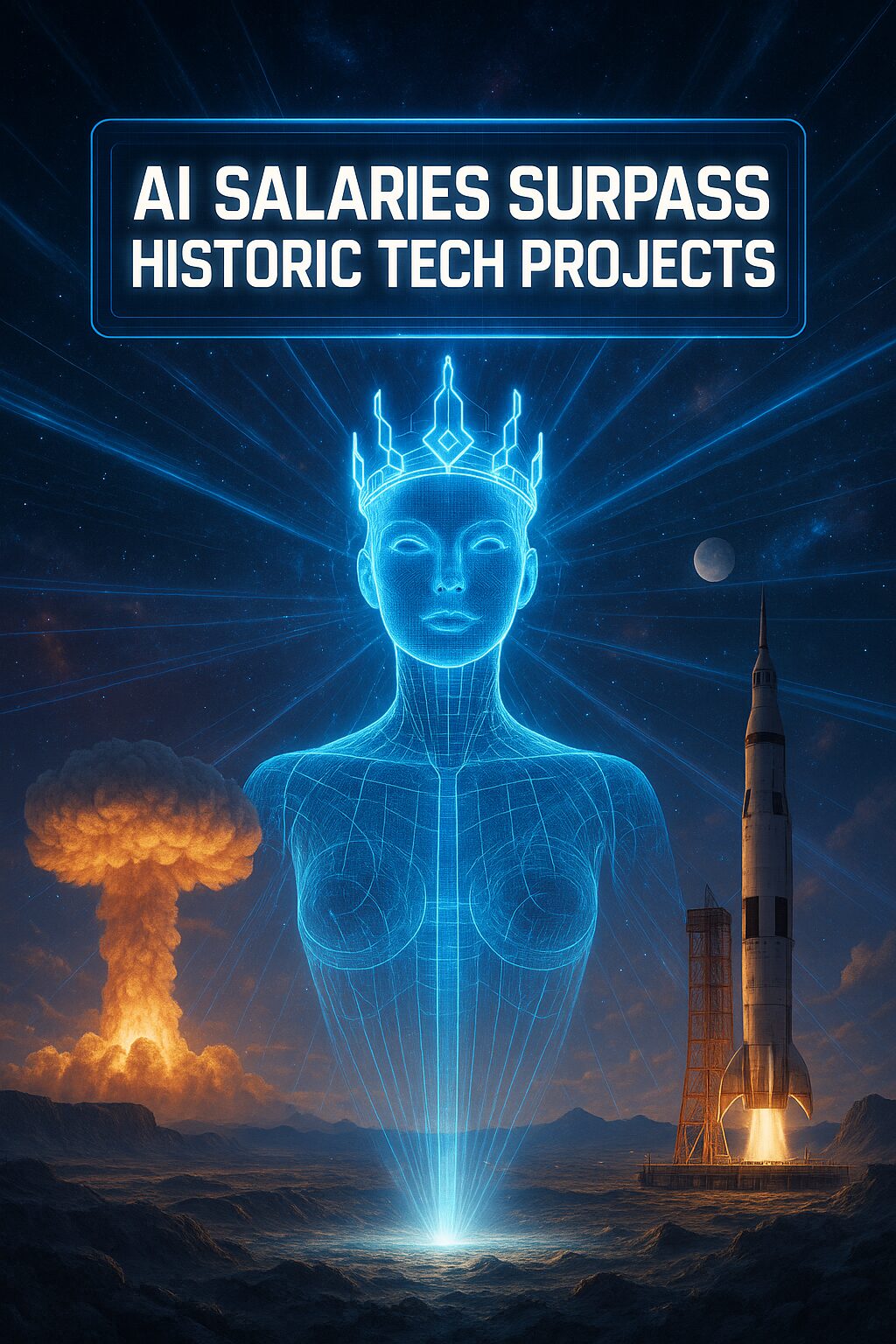
At $250 million, top AI salaries dwarf those of the Manhattan Project and the Space Race
# The Unprecedented Rise of AI Researcher Salaries: A New Era of Technological Compensation
The landscape of scientific achievement is marked by towering milestones—the Manhattan Project, the Space Race, and the birth of Silicon Valley. Each era had its visionaries who advanced the frontiers of knowledge, but none were remunerated like today’s AI researchers. The astronomical salaries now pocketed by AI engineers, such as Matt Deitke, serve as a testament to the high stakes and intense competition for talent in Silicon Valley’s race towards artificial general intelligence (AGI). This phenomenon is not merely a headline; it signifies an economic and social transformation tethered to the AI revolution.
## A New Standard of Remuneration
In the annals of scientific history, the compensation now offered to AI researchers is astounding. Recently, Meta offered Matt Deitke $250 million over four years, with his first year’s compensation potentially totaling $100 million. This sum dwarfs the salaries of engineers and scientists who spearheaded pivotal 20th-century innovations. To put this in perspective, J. Robert Oppenheimer, who directed the Manhattan Project, earned around $10,000 annually—equivalent to about $190,865 today. By contrast, Deitke’s deal is approximately 327 times Oppenheimer’s pay when adjusted for inflation.
So why this surge? The answer lies in the pursuit of AGI—a technology that could potentially remake industries, economies, and even daily life. Firms such as Meta, Google, and OpenAI are vying to become pioneers in this sphere. CEO Mark Zuckerberg of Meta envisions superintelligence as a catalyst for “an exciting new era of individual empowerment,” a sentiment echoed by other tech conglomerates ready to stake billions on this high-stakes game.
## A Historical Context: $100,000 or Hundreds of Millions
If we plunge into the archives of the past, we notice that even the most compensated tech figures pale in comparison to these contemporary figures:
– **Thomas Watson Sr.,** IBM’s iconic CEO, earned $517,221 in 1941 (about $11.8 million today).
– **Neil Armstrong,** the first man on the moon, earned roughly $27,000 annually, now about $244,639.
– **Apollo Engineers,** who designed rockets for the moon missions, peaked at salaries near $278,000 in today’s money.
– **Bell Labs,** a bastion of innovation, operated in an era where pay disparities were small, with the director earning about 12 times the lowest-paid worker.
Why do these historical salaries seem negligible next to figures like $250 million? It reflects the modern economy’s scale, inflation, and the vision tech companies have for AGI: a transformative force that could reshape global markets and yield trillions for its developers.
## Learning from the Modern Gold Rush
The AI salary explosion reveals much about our current economic landscape:
1. **Concentration of Wealth:** We’re witnessing an industrial wealth concentration unparalleled since the Gilded Age.
2. **Exclusivity of Talent:** Few possess the highly specialized expertise in cutting-edge AI fields, like multimodal AI, mastered by Deitke and others.
3. **Economic Stakes:** Companies view this investment in talent as a necessary expenditure to capture future markets and influence global economic patterns.
4. **Resource Competition:** Offers now include not just cash or stock but also valuable computational resources.
These insights present a vivid picture of a sector willing to pay unprecedented sums to secure the keys to the future’s economic realms.
## The Emotional Cord: The Cost of Progress or Preparation for a New Epoch?
As we reflect on this extraordinary financial landscape, two unsettling questions linger. Are companies prepared to balance human advancement with ethical considerations, ensuring that AI technologies benefit society equitably? Alternatively, are we simply at the dawn of an era where economic power consolidates around those who harness AI first?
This surge in AI researcher salaries provokes broader reflections on how society values intellectual potential, perhaps portending deeper shifts akin to past industrial revolutions. In pursuing AGI, the choice lies between unfounded hype and a transformative leap into a future where human imagination meets technological capabilities head-on. In this narrative, humanity’s trajectory rests not just on scientific progress but on the ethical and economic frameworks we choose to embrace.
Ultimately, the decisive question remains: **In a world where AI researchers become the rock stars of their age, will technological advancement bring us closer together—or drive us further apart?** The unfolding future may hold the answers.

